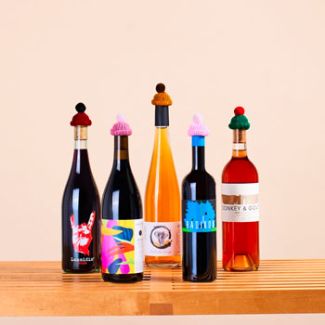
MYSA Natural Wine Club
Get a subscription from MYSA and it's like a passport for natural wine. Discover great natural wine without having to pick it out yourself.
$84.95 for 3 bottles
at MYSA
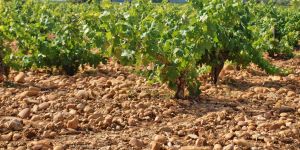
What Natural Wine Is and How to Spot It in the Wild
The Natural wine movement, which began in France in the 1980s, was born of the desire to create wines perceived as alive. If this statement raises a red flag for you, please continue reading anway; you might be surprised by what this really means.
Natural wine, to most of its fans and proponents, is made with organic or biodynamic grapes, utilizes native yeasts, is unfiltered, and has no additives (including sulfites). The idea here is that the grapes themselves are the truest expression of terroir, that the wine basically makes itself, and that no wine could ever be better than the grapes that went into it.
The extended definition, as provided by RAW Wine (a self-determined but widely regarded authority on this subject), is that natural wine: is made with organic grapes, grown without the use of artificial chemicals; is prepared by hand using artisanal techniques; is made using traditional winemaking processes that enable balance; creates a living wine, with low intervention in the cellar; promotes wellbeing in individuals & communities.
For me, the most important consideration here is that “natural wine” is simply old-school wine. Before we went about crafting all kinds of modern winemaking techniques (including the use of oak barrels), “natural wine” was just wine. As our world marches toward technology, some of us are pulling back and longing for the old days when people did things by hand, naturally.
Natural wine is considered by some to be alive. This is because the yeast, the only part of wine that actually is alive after harvest, is an integral part of the natural winemaking process, and is not removed from the wine.
For a more thorough reading about what natural wine is, I recommend these articles and authors (and this one, too).
Given that there is no such thing as a natural wine certification, identifying natural wine is an exercise in trusting a wine seller or critic and looking for specific buzzwords. None of these terms on their own are specific to natural wine, but they do appear frequently among the websites talking about natural wine.
I’ve ordered these terms based on where in the winemaking and drinking process they appear. There’s a lot to unpack here, as growing grapes for wine is incredibly complex and full of chemistry.
FYI: I find great wine deals so you don’t have to. To keep me on the hunt, I earn a commission when you buy wine based on my recommendations.
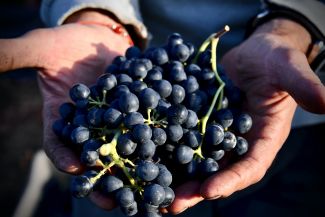
Whole cluster of grapes, hand-harvested. Photo by Martin Fennema on Unsplash
Hand-Harvested & Whole Bunch Pressed. According to Isabel Legeron, a Master of Wine and the generally-agreed upon leader of the Natural Wine movement, natural wine must be prepared by hand using artisanal techniques. No machine harvesters are allowed.
On the surface, that may seem irrelevant, but because natural winemakers like to press their grapes in whole clusters, the quality of the stems holding the bunch together are important. Machines do not make the same clean cuts at precisely the right place to enhance the wine fermentation. One reason to press with whole grape clusters is that the potassium from the stems adds acidity to the wine as it is fermenting.
Minimal Intervention (and Low Intervention). Natural wine intends to showcase the grapes and the ground they came from (more properly referred to as terroir). That means the winemakers’ job is to sort of shepherd those grapes into wine, not really “make” them into wine. Most pedigreed winemakers producing excellent wine believe “wine is made in the vineyard” and many of those men and women prefer minimal intervention techniques, regardless of whether they’re making natural wine.
“High” intervention wines are where the modern wine industry starts to flex its proverbial muscles — new oak barrels, reverse osmosis to change the alcohol content, adding sugar to appeal to the American palate, carefully timed fermentation to reach precisely the right amount of alcohol desired for the final product, and so many more “interventions.” These aren’t inherently bad processes, but they’re eschewed by the natural wine movement because they’re not a pure expression of the grapes.
A geeky but interesting read on the use of sulfites during winemaking. It includes a thorough description of other wine flaws that interventionist winemaking can address and how the natural winemakers get around these flaws (or don't).

Wild yeast fermentation of red wine. Photo courtesy of VinePair
Spontaneous Fermentation & Native Yeast. Before wineries started modernizing wine production, grapes were left to dry and ferment on their own. This was possible because yeasts which naturally live on grapes happily turned the grape sugars into alcohol without much coaxing.
These days conventional winemakers often use specially-designed (GMO) yeasts and control fermentation precisely to yield exactly the right amount of sugar, alcohol, and secondary flavors they want in their wines.
In contrast, natural winemakers bring grapes through fermentation with whatever indiginous yeasts came in from the vineyard and allow fermentation to complete naturally, often in the bottle (which leads to fizzy wines).
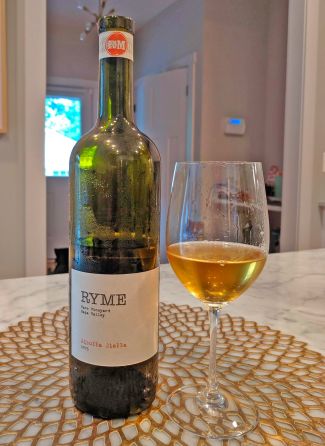
Orange skin contact wine from Napa. Photo by Jessyca Frederick
Skin Contact White Wines (a.k.a. Orange Wine). One of the many decisions a winemaker contemplates is how long to leave the pressed grape juice in contact with the grapes themselves (this process is called maceration). The longer a red-skinned wine grape is left in contact with the skins, the more intense the color of the wine becomes. This is how red wines and many rosés are produced, and it’s also how orange wine gets its color, though not all skin-contact wines turn orange.
Prolonged skin contact imparts other characteristics to the wine, like increasing tannins and therefore ageability. Orange wine is also oxidative (meaning oxygen is allowed to interact with the wine during fermentation, creating both sour and nutty flavors).
If you’ve tried orange wine or want a crash course in it, check out the MYSA Orange Natural Wine Club.
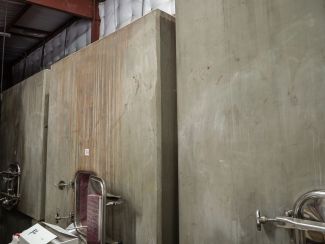
Large concrete tanks at Domaine de la Cote. Photo by Jessyca Frederick
Carbonic (Maceration). While a long white wine maceration can lead to orange wine, natural red wines often undergo carbonic maceration leading to fruitier and less tannic grape juice in a carbon dioxide-rich environment (as opposed to the oxygen-rich environment employed with white wine maceration resulting in orange wines).
Carbonic maceration is most associated with Beaujolais, a region of France famous for “fresh” red wines, usually served chilled. Like most other natural wines, the red wine grapes are not stemmed and crushed, rather they are macerated in whole clusters.
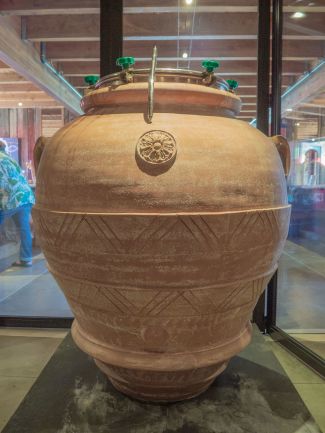
Clay amphora at Lone Madrone winery. Photo by Jessyca Frederick
Clay Amphora. After primary fermentation has completed, wines are stored for a period of time to continue to develop. Natural winemakers have a preference for the oldest vessels known, clay amphorae (they come from the country of Georgia, are called qvevri, and their known use dates back to 6000 B.C.). These vessels are preferred by natural winemakers because they’re inert and don’t impart any of their own flavors into the wine.
Natural winemakers also sometimes use neutral oak barrels (this means that they were previously used age wine for at least three years). Using a “recycled” product like a neutral wine barrel is part of the natural wine ethos.
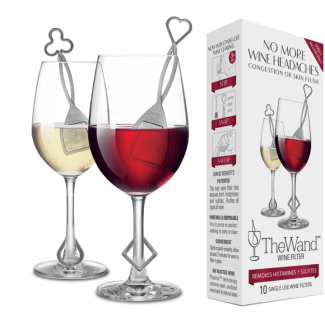
This product removes sulfites and histamines from wine. Try PureWine and end your wine headaches.
Pro Tip: You don't need to drink natural wine to avoid sulfites. Choose organic wine or check out this device which removes impurities from your wine and eliminates side effects caused by wine quickly and cheaply.
No Sulfites Added. Any fermented product naturally produces sulfites (kombucha, beer, sauerkraut, kimchi, salami, etc.). Sulfites are used as a preservative, too — especially in wine. One of the many tools in a modern winemakers toolbox is Sulfur Dioxide (SO2). Added in limited, but varying quantities, SO2 makes wine shelf-stable by preventing bacteria from growing during fermentation.
In the US, organic wine may not have any added sulfites and must contain less than 10ppm (parts per million) of natural sulfites; nevertheless all US wines are labeled as “contains sulfites.” In the EU, the requirements are radically different — sulfites can be added, but are limited based on how much residual sugar is in the wine.
Some people believe their wine headaches are caused by sulfites. Scientists estimate that roughly 1% of people in the world have a sulfite allergy or sensitivity, so for most of those people the cause is something else (usually histamines). If you have a sulfite sensitivity, natural wine is a great avenue for you to explore as less than 10ppm has not been found to be harmful, even in people with extreme sulfite sensitivities. Any USDA-certified organic wine also is suitable, natural or otherwise.
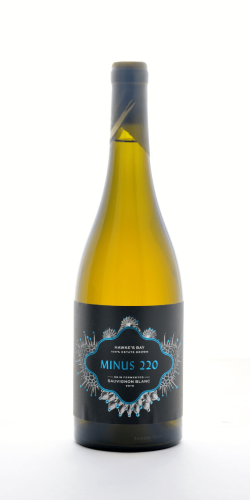
A complex skin contact Sauvignon Blanc that is unlike any you've tasted before. Every aspect of these bottles was special, hand corking each and sealing them with beeswax from a local honey company. Unfiltered and unfined. Available at MYSA Wine.
Unfined & Unfiltered. Not filtering wine is an important part of the natural wine canon. Wine is naturally cloudy when made. Basically every wine you’ve ever tried has been filtered and/or fined because most wine drinkers and critics have, until recently, agreed that clear wine is better than cloudy wine. The cloudiness comes from byproducts of fermentation which help the wine build structure and flavor if the wine is left to rest with them. Natural winemakers typically leave those byproducts in the bottles, especially for wines that at least partially ferment in the bottle.
Side note: fining and filtering is usually where “non-vegan” elements enter the winemaking process, so unfiltered wines are typically vegan-friendly.
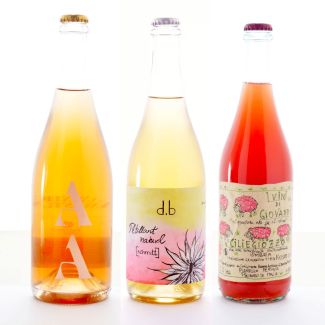
A selection of "pet nat" wines. Shop more Sparkling natural wine and Pet Nat at MYSA Wine.
Beer Cap “Corks.” Wine, when it’s a living thing, can spontaneously ferment again. This is sometimes called secondary fermentation and most often happens in the bottle. When a winemaker plans for fermentation to finish in the bottle, a cork closure won’t work — excess carbon dioxide created by the wee yeasties will force a cork out of the bottle. So these wines are typically bottled and corked with a beer cap (which can handle more pressure than a cork). These wines are also typically fizzy, and most commonly called Pet-Nat, short for Petillant-Natural. Some other natural wines that aren’t Pet-Nat will also get a little fizzy in the bottle and for natural winemakers, this is all part of the fun.
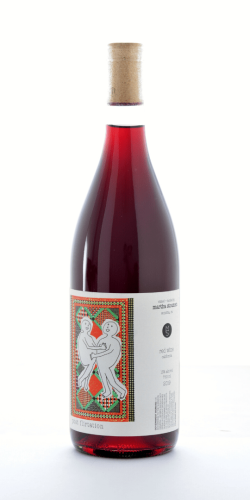
Notes of ripe blackberry and dried plum balance more herbaceous characteristics of pine and Rosemary; plenty of fruit but just enough structure; a buoyant wine that will lift up your palate rather than weigh it down. Best with a slight chill. Available at MYSA Wine.
Serve Chilled (for Red Wines). For a variety of reasons, natural wine tends to have higher acid levels than conventional wines. The wine world also calls acidity “brightness” and it is a sought-after characteristic in a well-balanced wine or one intended for aging. Wines with more acidity taste their best when chilled. The more acid, the more chill is recommended. This is why we see a lot of “serve chilled” recommendations for Natural red wine.
As Natural wine represents a tiny portion of the wine market, very few local wine stores or even online stores will have a selection for you to choose from (unless you live in Los Angeles or Brooklyn). Also, because there is no standard definition of natural wine, you should be mindful of how any given retailer has defined it for themselves — avoid any store that doesn’t tell you how they define the natural wine they carry.
That said, there is a well-established market for natural wine and there are plenty of places to shop. This guide focuses on where to buy Natural wine online in the US. Many online natural wine stores are located in Europe and don’t ship to the US, but these sites can be great resources for finding new natural wines and researching wines you’re interested in trying.
My favorite place to scope out natural wine is MYSA (pronounced mee-sah). Their selection, as they put it, includes familiar names and new producers. We also like that they have a scale for each wine describing how “classic” or “funky” a wine is. This is a great tool for wine drinkers who are new to natural wine (stick with mostly “classic” at the beginning) and those who love oddball wines (like me).
You can shop bottles yourself or join their wine subscription and let someone else do the picking.
MYSA ships wine everywhere in the US except: Alabama, Alaska, Hawaii, Kentucky, Mississippi, and Utah.
Another great natural wine shop, Vinovore is in Los Angeles (where there are many natural wine shops), but I have a soft spot for this one. The owner of Vinovore previously owned a wine bar that introduced me to the breadth of wine available in the world when I was just getting started. Plus, while you can find other sources of natural wine, this is the only selection further curated to include only women winemakers.
Vinovore ships to these states: Alaska, California, Idaho, Louisiana, Nebraska, North Dakota, New Mexico, Nevada, Oregon, Virginia, Washington D.C., West Virginia, and Wyoming.
I like Primal Wine, not the least of which because they think about natural, organic, and biodynamic wines the same way I do (which I learned in the Read This section on their website). Primal carries a large selection of natural wine from around the world.
I have a number of complaints about the Primal website and ease of use. You can’t filter the wine selection by color, type, or wine region, so you just have to scroll until you find something you like. This is made worse by the fact that they leave “sold out” wines in their bottle shop, so you have to scroll past stuff you can’t buy, too.
Lastly, alcohol shipping laws are complex and Primal Wine does not disclose which states it ships to (also not helpful).

MYSA Natural Wine Club
Get a subscription from MYSA and it's like a passport for natural wine. Discover great natural wine without having to pick it out yourself.
$84.95 for 3 bottles
at MYSA
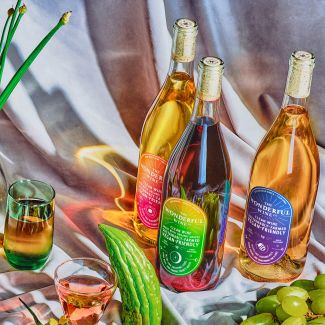
The Wonderful Wine Co.
Four natural wines to try — drink the rainbow. Starter Pack contains a Syrah, a White Blend, and a Malvasia Bianca Skin Contact Orange. There's also a Rosé.
$60 for 3 bottles
at The Wonderful Wine Co.